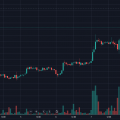
Cryptocurrencies have become increasingly popular over the past few years due to their efficiency anddecentralization.
Cryptocurrencies have always been an alternative to banks andfiat. But why do they even have value and who dictates it? The value of Bitcoin is really measured by the level of supply and demand for the asset. The coin itself is backed up by nothing more than a blockchain.
Every cryptocurrency uses a system that records transactions between two or more parties. This certainly increases the value of cryptocurrencies, but in no way determines their price.
Why are cryptocurrencies valuable?
Why do cryptocurrencies even have value? It is mainly based on supply and demand for a coin. For example, traditional fiat currencies are supported only by the government that issued them.
Digital money, such as Bitcoin (BTC), is not supported and is not tied to physical reserves, such as gold, and, of course, can change the value due to various factors.
Cryptocurrencies have value through mining — the process in which transaction verification is implemented. This process requires a certain amount of work, electricity and money.
Key factors affecting the value of cryptocurrencies
Since most cryptocurrencies are not physically supported by anything, their value is determined by supply and demand based on several important factors.
- One of the main advantages of cryptocurrency isdeficit. Most cryptocurrencies offerfixed, and, unlike traditional currencies, no one can issue more than the maximum limit. This means that cryptocurrencies are by nature a deflationary tool.
- Another key factor isdivisibility. Thus, any cryptocurrency can be divided into smaller units.
- Besidestransfer (transaction)cryptocurrency can be extremely fast andcheap compared to traditional methods. Rates are somewhat fixed regardless of the amount sent. So, theoretically, if you send 1 million BTC, the transfer cost will be $1 (or even less).
In a sense, Bitcoin and cryptocurrencies are supported by the faith of society in them, thanks to the realization that the current currency system is not so reliable.
Then why are cryptocurrencies so volatile?
Compared to traditional currencies and evenstocks, cryptocurrencies are much more volatile. This means that the current price of any cryptocurrency is subject to sharp changes in short periods of time. Quite often, the price of Bitcoin rises or falls by 5-10% within a few days. In fact, even during periods of low volatility, most cryptocurrencies experience price fluctuations of up to 1-2%, which is considered extremely high in traditional markets.
But there is an explanation for this.Cryptocurrencies tend to lack the liquidity that other markets have. According to Statista statistics, the average daily turnover in the global foreign exchange market is about $6.5 trillion per day. In the cryptocurrency market — there is only about $80 billion in daily trading volume, and according to various sources, much of the volume is actually fake.
Some cryptocurrencies have collateral.
However, there are also cryptocurrencies that are provided with gold, assets and even fiat. Tether (USDT) has become the most popular cryptocurrency known as stablecoin.
Stablecoin is always worth $1, subject to reserves.to provide. The first stablecoin to gain widespread popularity was Tether, but there was a lot of controversy surrounding it. Much of the criticism comes from the fact that Tether Limited has failed to prove that they actually have the funds to cover all of the Tether issued.
In addition, on April 30, 2019, Tether Limited's attorney actually admitted that each coin was secured with only $ 0.74 in cash.
There are currently more than a dozenstablecoins that are backed by fiat, commodities, and even cryptocurrencies. TrueUSD is an analogue of Tether, and is considered one of the most reliable stablecoins currently, thanks to an independent audit back in March 2019.
A more complex stablecoin is Dai.supported by Ethereum and pegged to the US dollar. The system behind Dai basically locks Ethereum into smart contracts. If Dai is too far from $1, the system will use the contract to stabilize it. However, there is a small problem: Dai is not completely decentralized, since the technology behind it is controlled by the Maker Foundation.
DigixDAO — another stable coin,backed by gold bars. This is an ERC-20 token created back in 2014. According to the company, the gold is stored in vaults in a safe deposit box in Singapore and 1 DGX will always be equal to 1 gram of gold.
Not all asset-backed cryptocurrenciesare stablecoins. For example, the first oil-supported cryptocurrency was introduced by Venezuelan President Nicolas Maduro back in 2017. Petro, although it is strongly criticized, the asset is supposedly the first cryptocurrency supported by oil, due to the huge reserves of oil and mineral resources in the country.
Asset Tokenization
In the past few years, tokenization of traditional stocks and assets has become popular. There are countless startups using the blockchain to tokenize property.
Asset tokenization brings numerous benefits, such as greater liquidity, greater transparency, cheaper and faster transactions, and greater availability.
</p> 5
/
5
(
1
voice
)





